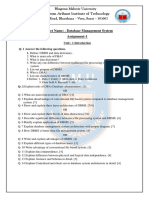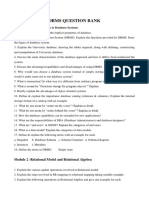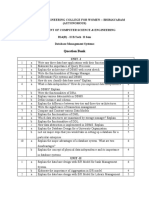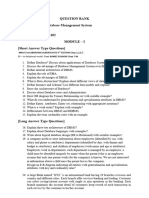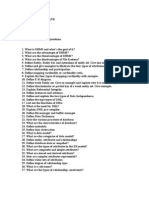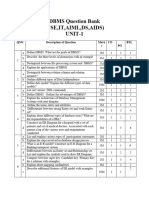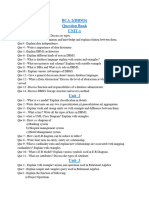0% found this document useful (0 votes)
34 views5 pagesQB 1&2 Dbms
The document is a question bank for the Computer Science and Technology department at Vivekanandha College of Engineering for Women, covering topics related to Database Management Systems (DBMS) and SQL. It includes definitions, explanations, and examples of various concepts such as data models, relational algebra, keys in RDBMS, and SQL queries. Additionally, it contains practical exercises for creating ER diagrams and writing SQL commands.
Uploaded by
Fowjiya CSTCopyright
© © All Rights Reserved
We take content rights seriously. If you suspect this is your content, claim it here.
Available Formats
Download as DOCX, PDF, TXT or read online on Scribd
0% found this document useful (0 votes)
34 views5 pagesQB 1&2 Dbms
The document is a question bank for the Computer Science and Technology department at Vivekanandha College of Engineering for Women, covering topics related to Database Management Systems (DBMS) and SQL. It includes definitions, explanations, and examples of various concepts such as data models, relational algebra, keys in RDBMS, and SQL queries. Additionally, it contains practical exercises for creating ER diagrams and writing SQL commands.
Uploaded by
Fowjiya CSTCopyright
© © All Rights Reserved
We take content rights seriously. If you suspect this is your content, claim it here.
Available Formats
Download as DOCX, PDF, TXT or read online on Scribd
/ 5

